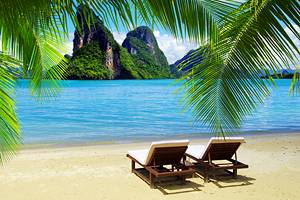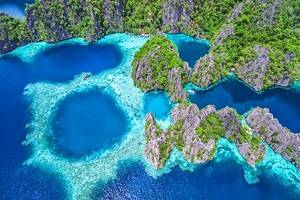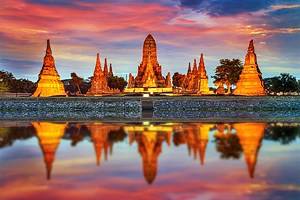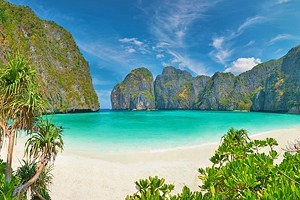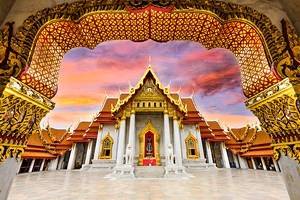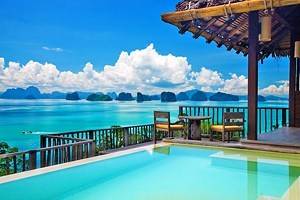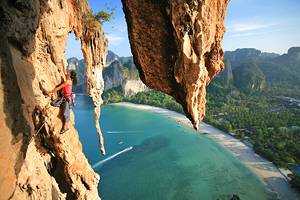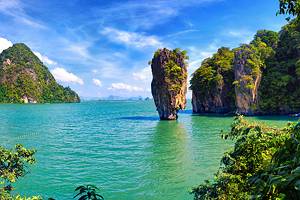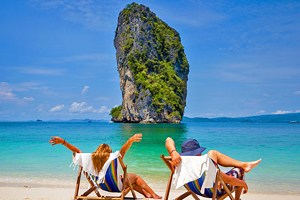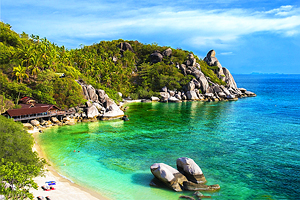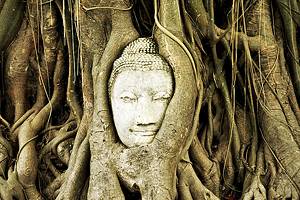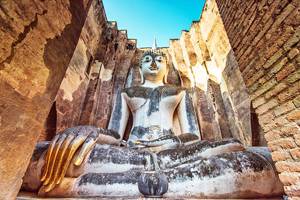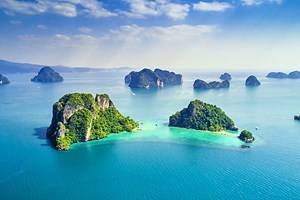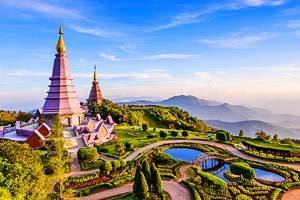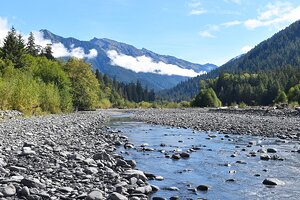21 Top-Rated Tourist Attractions in Thailand
Thailand is the gateway to Southeast Asia. It's a country that is sure to cause sensory overload, and yet is one of the most approachable and easy-to-navigate countries on the Asian continent. Thanks to a thriving tourism industry, Thailand is well-equipped with creature comforts, yet is also wild enough to offer rugged, uncharted adventure and once-in-a-lifetime travel experiences.
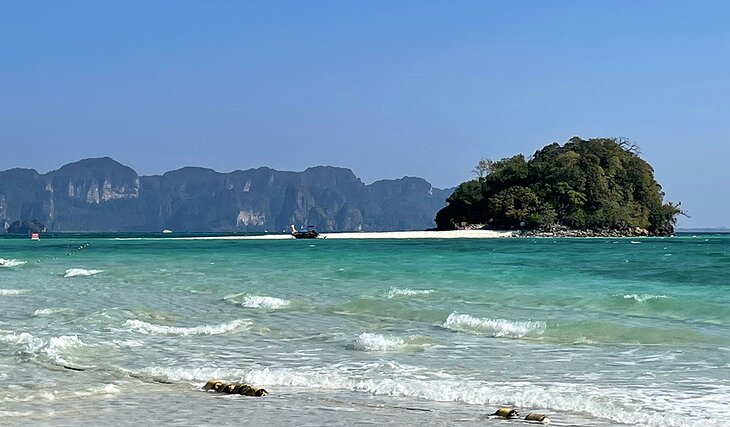
Over the years I've spent many months exploring Thailand and am still discovering new things to see and do. Whether you're looking for sparkling white-sand beaches, towering limestone cliffs, thick jungles, verdant rice fields, or electric, cosmopolitan cities, Thailand has something to offer.
My travels have taken me from the tiny flecks of islands in the south to the UNESCO World Heritage Sites of Ayutthaya, from the rooftop restaurants of Bangkok to the remote mountain villages of northern Mae Hong Son. Thailand's attractions are diverse, and each provides a rewarding and memorable experience in its own way.
For some inspiration when planning your trip, here is my list of top tourist attractions in Thailand.
- Railay Beach
- Koh Phi Phi
- The Grand Palace, Bangkok
- Sunday Walking Street, Chiang Mai
- Pai
- Wild Elephants at Khao Yai National Park
- Sukhothai Old City
- Historic City of Ayutthaya
- Beaches of Koh Samui
- Doi Suthep
- Floating Markets
- Climbing at Tonsai Beach
- Kanchanaburi Bridge
- Waterfalls at Erawan National Park
- Maruekhathaiyawan Palace
- Khao Sok National Park
- Ao Nang
- Hua Hin Beach
- Prasat Hin Phimai
- Phang Nga Bay
- Mae Hong Son Loop
- Best Time to Visit Thailand
Railay Beach
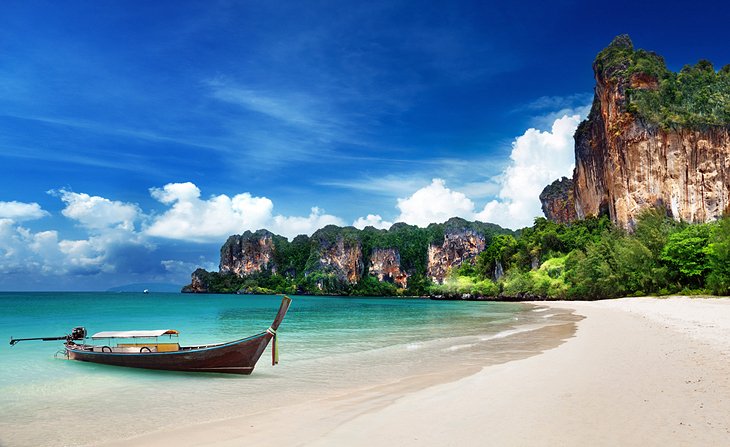
Krabi province is home to some of Thailand's most famous beach destinations and Railay tops the list as one of the most stunning. Definitely one of the best beaches in Krabi, Railay delivers on promises of white sand, turquoise-blue water, and the feeling that you've found a slice of paradise even before your feet touch the sand.
The island can be reached by boat from Krabi town and Ao Nang-and the trip on a long-tail traditional boat is just as magical as what you'll encounter when you reach the shores.
While the beach might be the main reason to visit the island, Railay is also a rock-climbing hot spot, with karst peaks drawing adventurers both experienced and novice, ready to take on the towering limestone cliffs.
Among the many other active things to do, Railay is well-known for its ocean rafting and kayaking, snorkeling, and scuba diving-but visitors can also try their hand at cooking classes or indulge in a massage.
There's also the tourist-friendly Diamond Cave, reached via a beautiful trail with stunning views and ready to accommodate curious visitors looking to do some exploring between stretches of sunbathing.
Koh Phi Phi
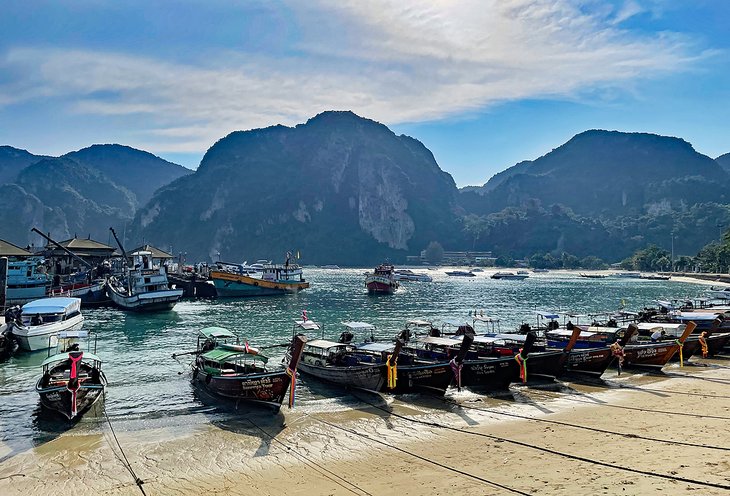
On my most recent three-month visit to Thailand, we kicked off the experience with a visit to the magical Phi Phi Islands.
The main island is Phi Phi Don. This is the largest of the islands and the only one permanently inhabited, and this is what people usually mean when they refer to Koh Phi Phi. Koh Phi Phi Leh is the other of the Phi Phi Islands
Perhaps one of the most fun spots on Koh Phi Phi is Monkey Beach, where you'll come face to face, literally, with plenty of macaques ready to steal your lunch.

Long Beach is another nice spot on the island; while not a secluded place where you can hope for privacy, it's great for watching the sunset. If you're lucky and the tide is out, it's a beautiful walk back towards the main part of the island.
Tour operators offer packages for snorkeling and diving trips to the islands, as well as excursions to the famous Maya Bay, where the Leonardo DiCaprio movie The Beach was filmed. Note that you can no longer swim in Maya Bay thanks to a government ruling to help restore the reef system. You can walk on the shore, though, and snap all the photos you want.
Because Koh Phi Phi draws so many tourists, there are plenty of tour companies arranging tickets to other beach destinations, such as Phuket, Koh Chang, and Koh Lanta.
Phi Phi Don was one of the areas hit hard by the 2004 tsunami - but since then, guesthouses, restaurants, and markets have been rebuilt, and crowds still come in droves to the resort island. There is a small, somber memorial park to honor those who died in the tragedy, but the resort areas are otherwise revived and looking as beautiful as ever.
The Grand Palace, Bangkok
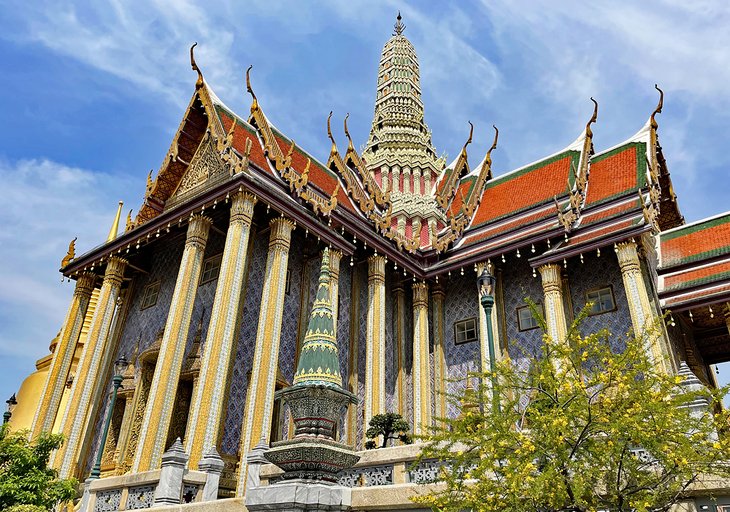
Even if your plans for Thailand mainly involve frolicking on a beach and eating as much Massaman curry and pad Thai as humanly possible, you'll probably spend at least a day or two in Bangkok. In fact, I encourage it as it is one of the most fascinating and exciting capital cities in the world.
There are plenty of things to see and do in Bangkok, but the Grand Palace should definitely be at the top of your list. This is the number one sightseeing attraction in the city, and it's staggering in both historical significance and craftsmanship.
The grounds are a maze of royal halls, temples, and ancient relics, the most important being Wat Phra Kaeo (the Temple of the Emerald Buddha), said to hold a fragment of either hair or bone from the enlightened Buddha himself.
Allow several hours to do the Grand Palace justice, but if you're up for more walking afterward, you can easily take in some of the city's other major landmarks nearby. The famous Wat Po and Wat Arun, the Temple of the Dawn (a great place to watch the sunset), are just a few minutes away.
Wat Arun happens to be my favorite temple in Bangkok and I am sure to always make a visit every time I go. If you want a great view of Wat Arun (and a tasty meal, too), head to the rooftop of Hotel Riva Arun Bangkok. This rooftop restaurant has a perfect view of the temple and a menu of delicious Thai cuisine.
Read More:
Sunday Walking Street, Chiang Mai
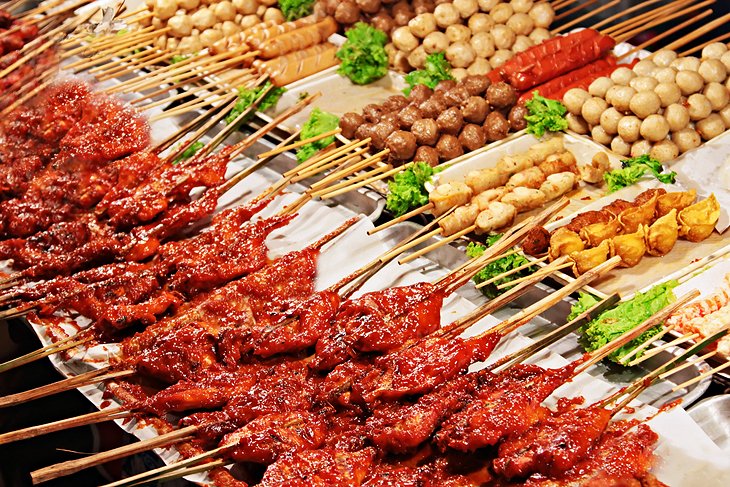
Every Thailand visitor looks forward to cheap and delicious food, and that's exactly what they can find in abundance at Chiang Mai's Sunday Night Walking Street. Vendors sell all kinds of treats here, from the popular pad Thai and chicken satay to samosas, to fried bananas, sweet roti, and fresh fruit shakes.
Once you've satisfied your culinary cravings, you can peruse hundreds of stalls selling an array of unique goods such as all-natural soaps, hand-dyed textiles bearing the unique patterns of local hill tribes, incense, and essential oils, musical instruments, paintings, wall hangings, and more.
The market gets crowded every week without fail, no matter what time of the year you're visiting, so brace yourself and try to enjoy being part of the fun chaos. This is one of the must-dos in Chiang Mai, and an essential part of the Thailand experience.
If you're not around for the Sunday market, or just want to get a taste of other market experiences in Chiang Mai, check out the Saturday Night Walking Street or the Night Bazaar on Chang Klan Road, a daily event. For something less touristy, head to the daytime Warorot Market, near Mae Ping River.
Pai
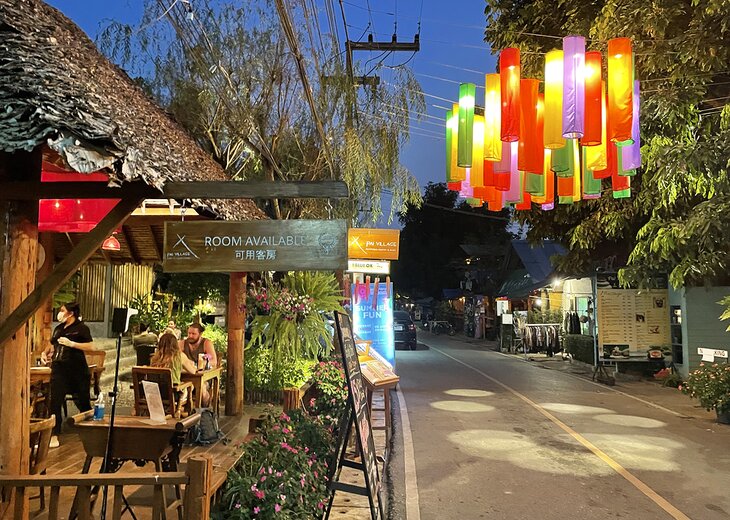
Thailand's reputation as a country of beautiful landscapes and friendly people is due largely to the world-renowned southern beaches. Because of this, most people don't realize that the vast north is also home to entirely different but equally breathtaking places to visit.
Northern Thailand, particularly the western region near the Burmese border, is marked by mountainous jungle terrain that is both rugged and beautiful. Pai, in Mae Hong Son province, is the perfect starting point from which to enjoy the country's natural beauty, as well as the famed Thai hospitality and cooking.
I fell in love with Pai on a motorbike trip along what is known as the Mae Hong Son loop. This 300-mile loop road starts in Chiang Mai and zips along hundreds of switchbacks through the mountains, stopping in towns like Mae Sariang, Mae Hong Son, and Pai.
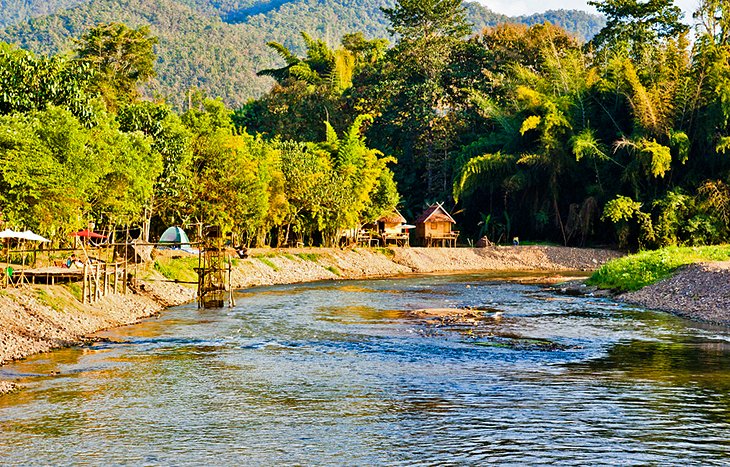
This small town has developed a reputation as a mecca for hippies and backpackers, though you will see plenty of families traveling in the area as well. There is a small walking street market that comes alive every night, a variety of local and Western foods, and easy access to nearby Buddhist temples, waterfalls, and the impressive Pai canyon.
There is an air of cheerfulness and relaxation as you walk through the tiny town center, a vibe that continues to draw crowds season after season despite its somewhat remote location.
Wild Elephants at Khao Yai National Park
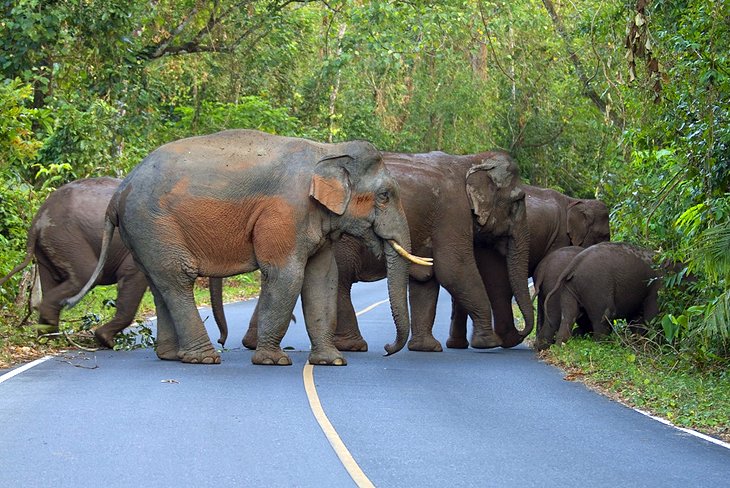
Elephants are revered in Thailand, and statues and paintings of them can be seen everywhere you go, including the royal palaces and many temples. For the ultimate experience, however, nothing beats the chance to see elephants in their natural environment, and Khao Yai National Park provides a great opportunity to do just that.
Here, you'll run into elephants roaming near rivers, exotic birds of prey, monkeys, and plenty of other tropical creatures that call the park home. The park is also home to many waterfalls, including the 150-meter-tall Haew Narok and the even more famous Haew Suwat, which appeared in the Leonardo DiCaprio's film, The Beach.
If a one-day stay isn't enough to take it all in, it's possible to camp out at the park and get up early enough to watch the sunrise over the lush landscape.
Sukhothai Old City
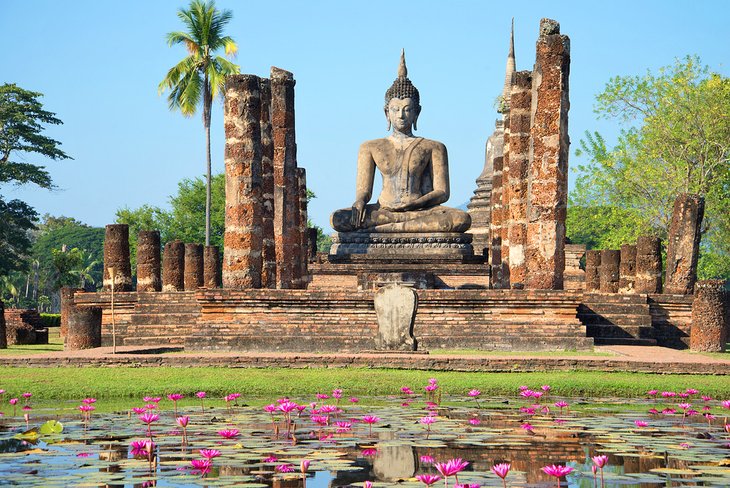
A favorite stop for history buffs and photography enthusiasts, Sukhothai offers many lovely photo ops at a smaller scale than Ayutthaya. The ruins of this old city still stand proud despite enduring centuries of battle and exposure to the elements. Sukhothai's Old City is a UNESCO World Heritage site, and much has been invested to restore and preserve one of Thailand's most significant historical sites.
Of the many wats in Sukhothai, Wat Mahathat is the most impressive. Founded sometime in the 13th century, the temple was built to enshrine Buddha relics and is surrounded by massive standing Buddha images, stuccoed sculptures, stupas, and more.
Historic City of Ayutthaya
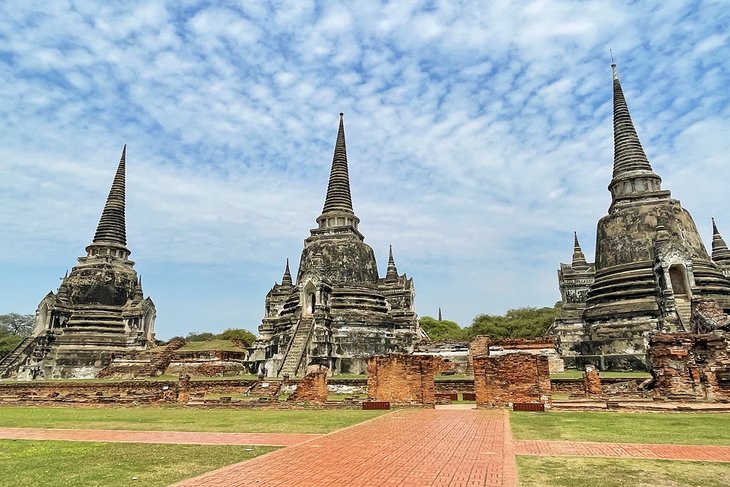
Ayutthaya offers a magnificent peek into the glory of ancient Thailand, where visitors can wander the haunting but romantic ruins of the former capital.
Ayutthaya was once the most important city in Thailand, and the old palaces and temples stand as a testament to this. Over a hundred wats, chedis (Thai-style stupas), prangs, and thousands of Buddha statues are spread around the park. All of the temples in Ayutthaya are breathtaking, but perhaps the most memorable is Wat Mahathat, known for the statue of Buddha's face that has been completely engulfed in tree roots.
Ayutthaya is located only a short bus trip or train ride from Bangkok, making it convenient for a day trip if you're pressed for time. If you're on a more leisurely schedule, plan on spending a few days exploring the ancient capital and rent a push-bike to tour both the old city and the new.
Read More: Top-Rated Tourist Attractions in Ayutthaya
Beaches of Koh Samui
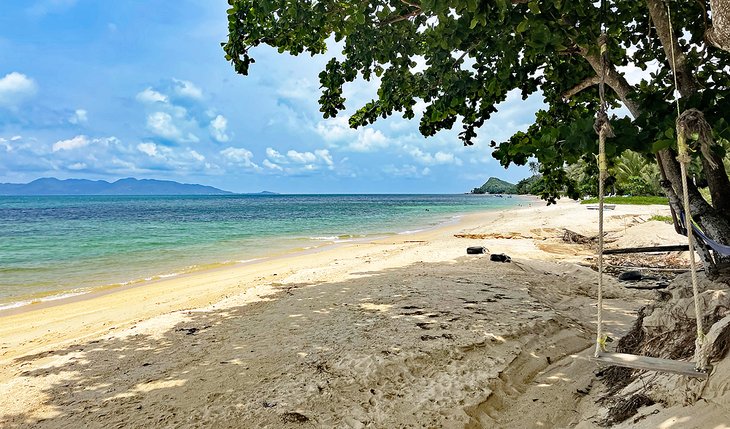
Koh Samui island is home to some of the most beautiful beaches you'll find in Southeast Asia. Each beach on Koh Samui offers something different: some are ideal for peaceful isolation; others are filled with activities, water sports, and big crowds.
The island's biggest and busiest beach is Chaweng, where you'll also find the best shopping, plenty of attractions, and some of the nicest restaurants. The turquoise blue waters and palm trees dancing in the ocean breeze might explain why some of the island's best resorts are located here.
Keep in mind, though, that Chaweng is definitely the most crowded beach on Koh Samui. If you are craving a tranquil beach atmosphere, head along the north coast or around to the western side of the island. These beaches may not have as many services as Chaweng, but they make up for that with supreme beauty and privacy. My favorite beach was Maenam Beach located along the northern coast.
Heading just south of Chaweng Beach will get you to Lamai Beach, a little smaller and slightly more affordable but still busy in the middle of the day, as day-trippers arrive.
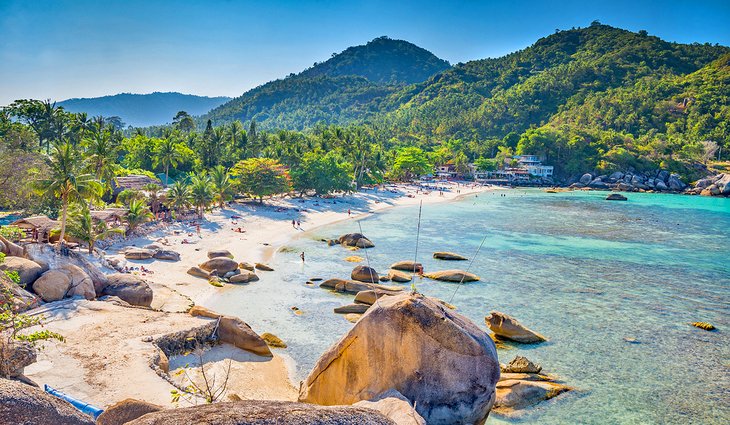
For backpackers and those on a budget, there's Maenam Beach, while Bophut Beach (better known as "the Fisherman's Village") is a great destination for visitors wanting a place that retains some traditional Thai touches. At Bophut, that means wooden Thai-Chinese shophouses sitting close to boutique hotels and plenty of attractions.
If you have privacy in mind, the 250-meter-long Silver Beach is somewhat hidden behind forested hills and offers beautiful open views over the water and excellent snorkeling. Bang Po on the northwest coast is another quiet beach that sees fewer visitors.
Read More:
Doi Suthep
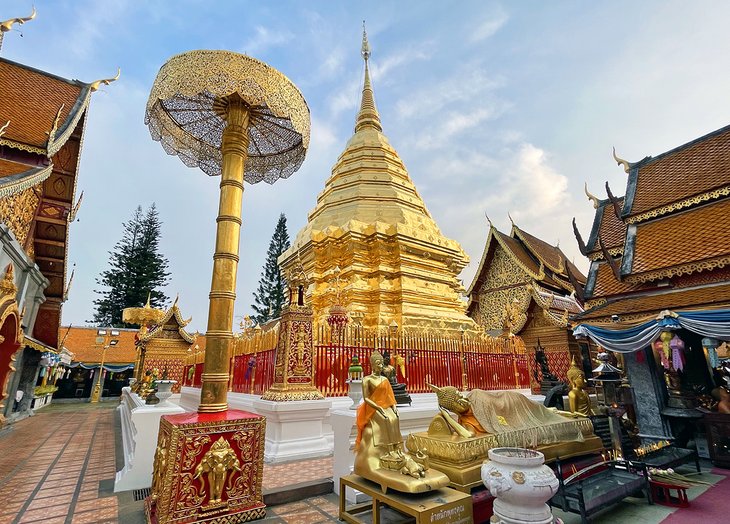
Perhaps the best-known wat in Chiang Mai sits atop Doi Suthep, a mountain overlooking Thailand's second-largest city. A favorite destination of devout Buddhist followers and travelers from all over the world, Doi Suthep is a marvel of intricate religious carvings - a visit here means seeing monks praying, witnessing worship rituals, and a chance to gaze out over the ever-growing sprawl of Chiang Mai city.
Just be sure to bring a bottle of water and your walking shoes - you'll have to climb a steep staircase to reach the top of the hill where the temple is. At the base of the stairs, vendors hawk everything from tasty local treats to goods handmade by villagers from the surrounding mountains. There's also a shop selling masks, elephant carvings, and home furnishings, so you can do some shopping while recovering from the trek up and down the stairs.
You can combine your trip to Doi Suthep with excursions to Doi Pui, a small Hmong village in the mountains. Although far more touristy than other villages, this will still give you a taste of Hmong culture and a chance to learn more about the hill tribe communities in the region, not to mention purchase some beautiful hand-woven textiles. The Bhubing Palace, open to tourists, is on the way to Doi Pui from Doi Suthep as well.
Accommodation: Top-Rated Places to Stay in Chiang Mai
Floating Markets
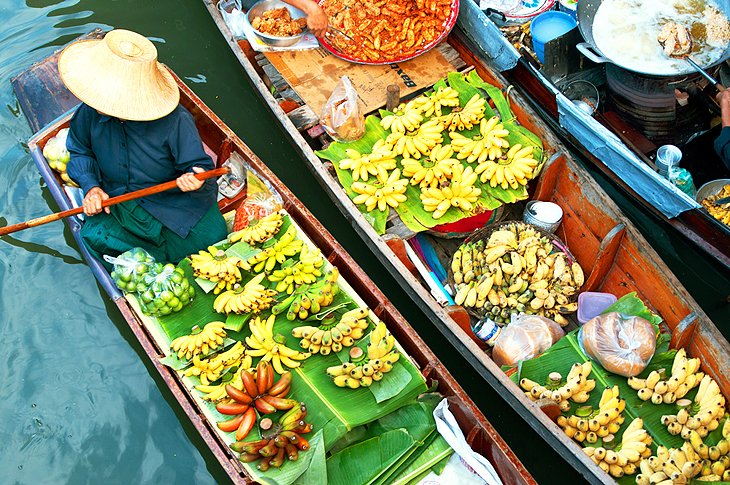
Thailand's floating markets offer a unique way to do some shopping and eating while supporting local vendors and getting a closer look into a traditional way of life.
While some of the markets do seem to cater more to the tourist crowds, others make for a nice authentic travel experience that involves getting in a boat and letting your guide take you through canals, where you'll see traditional houses on stilts and run into sellers offering wares from their own boats. You'll need to get up early to visit a floating market, as vendors are out in their long wooden boats first thing in the morning with their goods, fresh fruits, vegetables, spices, and tasty dishes.
There are several floating markets near Bangkok, with Amphawa and Damnoen Saduak being among the most popular. You can visit the markets on your own or join a guided tour, which often includes visits to other local attractions and shops.
Climbing at Tonsai Beach
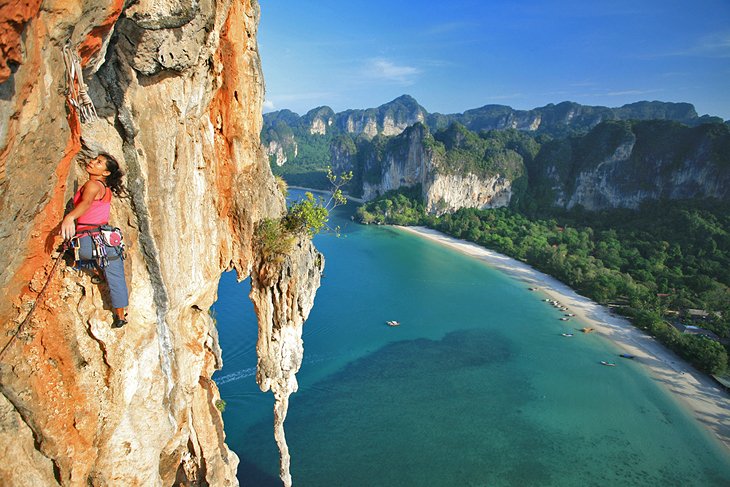
With its stunning limestone cliffs hugging sandy coastlines and turquoise waters, Thailand attracts plenty of climbers all year long - and while there are many destinations that offer stunning routes, Tonsai Beach has long been considered a climbers' paradise. One of the great things about climbing here is that you can just as easily climb solo or find a climbing partner or club once you arrive - and if you need a refresher lesson, that won't be a problem to find here either.
Because the area has many climbing and bouldering schools, the easier routes are often busy, and you might even have to queue to get up to the most popular viewpoints. If you're an experienced climber - and can get around stalactites, overhangs, and tufa - you'll fare much better and get the best spots with stunning open views over the bay (almost) all to yourself.
Kanchanaburi Bridge
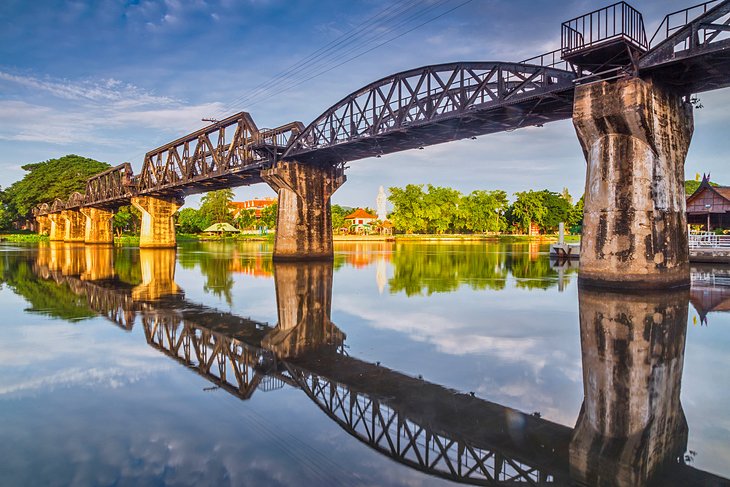
Better known to many as "the bridge over the River Kwai," the Kanchanaburi bridge is part of the Thai-Burma Railway that never came to be. During WWII, Japanese forces were intent on building a railway link between Thailand and Burma and used Allied prisoners of war (mostly British, Dutch, and Australian citizens) for forced labor. Over 12,000 Allied prisoners ended up dying during the one year the bridge was under construction – and reconstruction, as the bridge was bombed and damaged more than once – leading to it being known as the "Death Railway."
While the Kanchanaburi bridge remained closed for years after the war ended, it is now again in operation and can be crossed by boarding a slow local train. About 130 kilometers of the original 415-kilometer railway route are in use today, a grave historical reminder of the horrific events that took place here.
Near the bridge, the Kanchanaburi War Cemetery is the final resting place of Allied military personnel from many countries except the United States, which repatriated all remains. The Hellfire Pass Museum and the JEATH War Museum both offer insights on the history of the railway and the effect of the war in Thailand.
Waterfalls at Erawan National Park
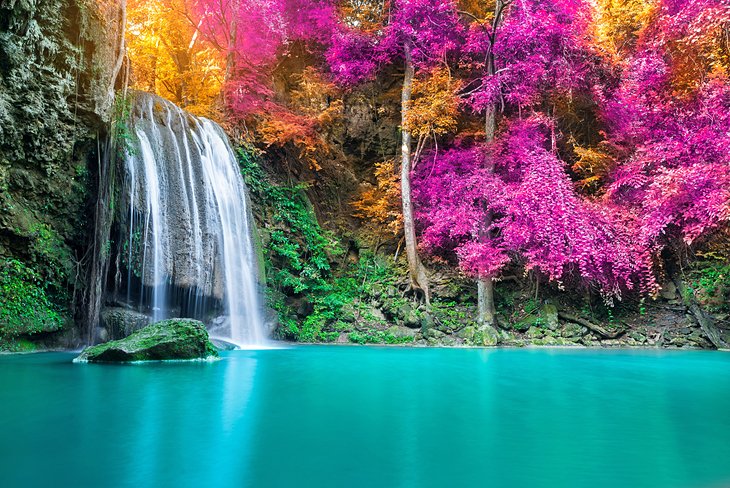
Erawan National Park has much to offer to visitors, including a number of caves; paths that cut through thick deciduous forests; and fauna that includes wild elephants, gibbons, and great hornbills. But it's the waterfalls here – and especially the seven-tiered Erawan Falls – that attract the bulk of the visitors.
The falls are named after the white elephant that travels with the Hindu god Indra because the tiers are said to slightly resemble the shape of an elephant's head.
Each of the seven tiers also has its own name, and reaching them gets harder and harder as you go up – after the fifth tier, visitors need to use slippery ladders while pushing through thick vegetation in order to continue. You might not need to venture that far, though. The first three tiers are actually the most impressive, offering emerald green pools, a small cave, and cool cascading waters. Plenty of curious fish live in the pools, so don't be surprised to feel them swimming between your feet.
Maruekhathaiyawan Palace
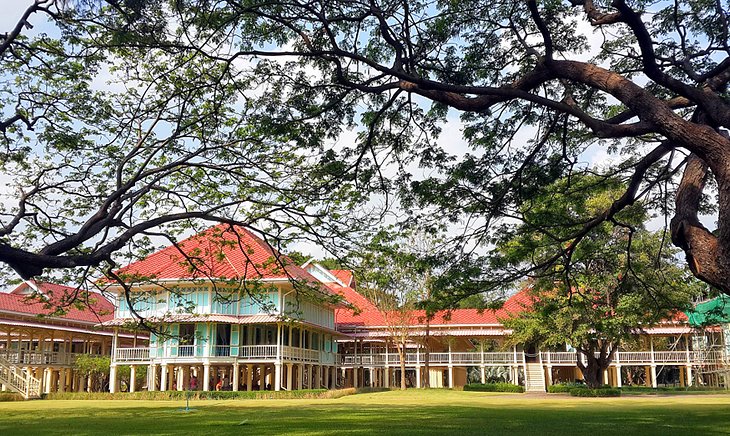
Built as the summer residence of King Rama VI, who reigned until 1925, this unique teak palace is stunning in many ways. The king originally ordered its construction following a suggestion by his doctor, who thought an airy seaside climate would help the king's rheumatoid arthritis.
The palace was then built in Hua Hin, a sleepy seaside town about three hours south of Bangkok. Today, Hua Hin is a popular destination for families and travelers who want to enjoy the beach in a relaxed atmosphere away from the crowds.
Mrigadayavan Palace (Maruekhathaiyawan) was designed to stand completely on stilts, which allows the sea breeze to circulate on all sides and keeps the buildings cool. The palace complex consists of a number of buildings divided into three main groups: the official reception area; the king's private quarters; and the ladies' quarters, originally designed for the Queen and an area no other man, besides the king, could enter.
The palace is an exquisite mix of Western standards (which included a modern-for-the-time bathroom and a badminton court) and traditional Thai architecture that can be visited and enjoyed by everybody today.
Khao Sok National Park
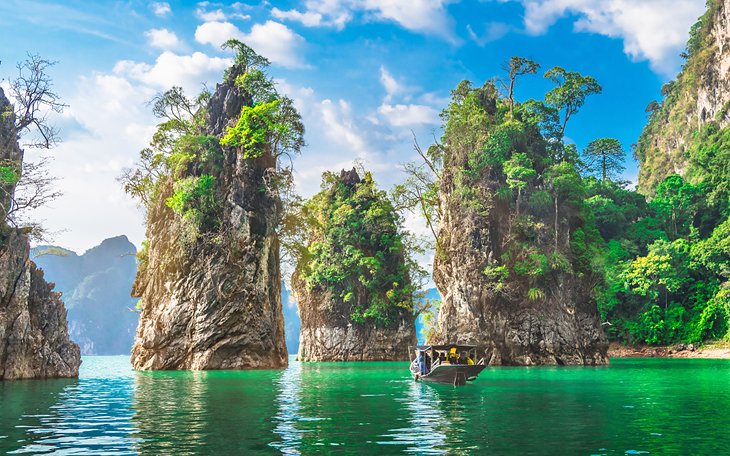
Khao Sok National Park is a unique mix of very diverse ecosystems. Home to rainforest that's older than the Amazon, the park also contains a limestone mountain range covered in karst formations, many kilometers of trails, and even a river you can explore on canoes or bamboo rafts. The park is home to Malayan sun bears, tigers, and wild elephants, and sightings aren't rare once you get deep into the evergreen rainforest.
The park is also famous for its eco-luxury camps, where tents come with en-suite bathrooms, deluxe bedding, their own kayak, and some of the best meals you'll try in Thailand.
Ao Nang
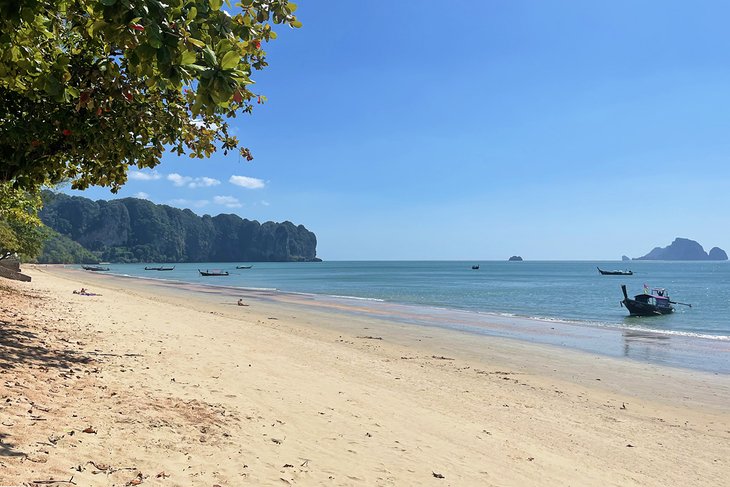
One of the most important anchors for Krabi's islands is the mainland beach town of Ao Nang. It's from this pier that many travelers venture off to the more far-flung and remote beaches, like Railay, Koh Poda, and the beaches of Koh Phi Phi. But Ao Nang is an attraction in itself, with so much to see and do right here on the mainland.
Ao Nang is a busy port, and more often than not, you'll find the bay practically brimming with longtail boats waiting to take tourists out onto the water. The long, wide beach is always alive with activity, from sunbathers and tour-seekers to street food vendors.
Ao Nang has two main thoroughfares that are flanked on either end with restaurants, shops, and hotels. Outside of town is another main road lined with street food stalls that comes alive once the sun goes down. The Ao Nang night market is an absolute must for people-watching, street food, and waterfront sunsets.
Author's Tip: I spent about four weeks in Ao Nang during my latest adventure to Thailand and it became a very special place to me. When the streets of Ao Nang became too busy with tourists, I took a quick 10-minute motorbike ride over to Klong Muang Beach, a sleepy stretch of beachfront restaurants and bungalow-style rentals.
Hua Hin Beach
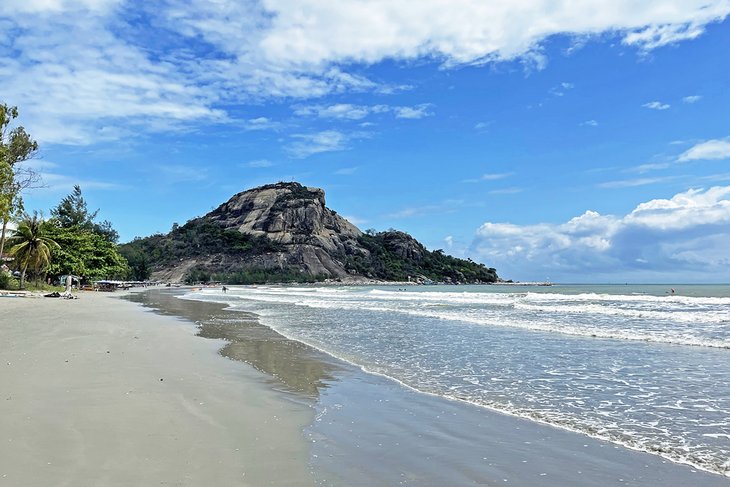
Where do Bangkok residents go when they want a relaxing beach getaway? Hua Hin, of course. This bustling seaside town is jam-packed with restaurants, resorts, shopping, and lots of things to do. It's for good reason – the main draw to Hua Hin is its powder-white beach that sits perched at the edge of the turquoise Gulf of Thailand.
Hua Hin Beach is massive. It runs from Klai Kangwon Palace in the north down to Khao Takiab. It is undeniably one of the top attractions in Thailand, but that does come with a few caveats. The sand is as bleached white and soft as they say, but because of its beauty, it has definitely become increasingly crowded over the years. The white sand is lined with dozens of beach restaurants and hawkers who charge crazy prices for food and beverages. And it may be difficult to find a quiet place to swim.
Having said all that, it is absolutely beautiful. Arriving in shoulder season will ensure that it will be a little more low-key.
For something a little more laid-back, head to Suan Son Beach, which is about 12 kilometers south of Hua Hin.
Prasat Hin Phimai
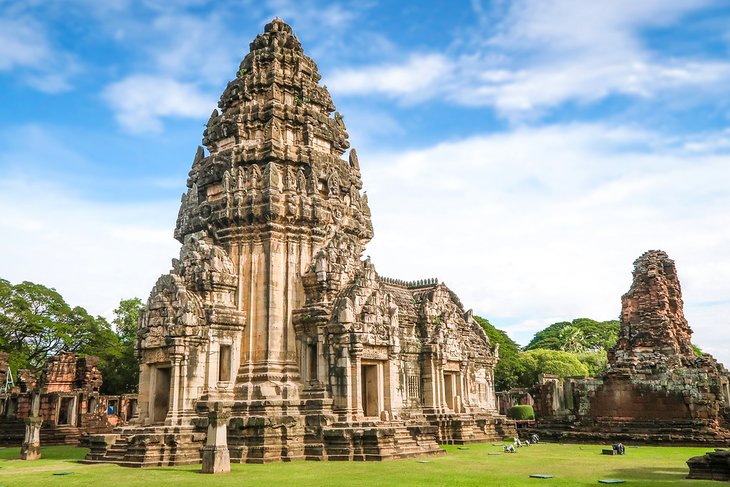
Thailand's ancient cities are among the most beautiful and fascinating in the world. Most visitors to Thailand know about Sukhothai and Ayutthaya, but Prasat Hin Phimai is another gorgeous historical park that is worthy of your time.
The Phimai Historical Park holds one of the largest Hindu Khmer temples in the country. It dates back to the 11th or 12th centuries. In fact, it was connected with Angkor (in present day Cambodia) by an ancient Khmer roadway. If you've ever visited or seen pictures of Angkor Wat you'll recognize the gorgeous, elaborate architecture.
The stunning historic park is in the Nakhon Ratchasima province to the northeast of Bangkok.
Phang Nga Bay
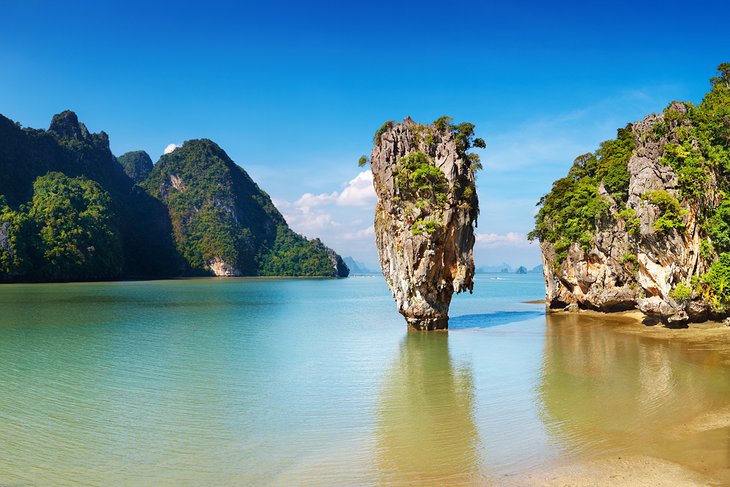
When you close your eyes and picture the southern seas of Thailand, what you're likely picturing is the mesmerizing Phang Nga Bay. Positioned between southern Thailand's mainland and the island of Phuket, the massive bay is known for its towering limestone cliffs, electric blue water, tropical lagoons, rich jungle forests, and small islands.
The bay is also home to Ao Phang Nga National Park, which keeps its natural beauty protected. Many visitors who come to Thailand tour the bay on a day trip or an island-hopping tour. One of the most famous islands is called James Bond Island, thanks to its appearance in the film, The Man with the Golden Gun.
While exploring the bay, the Similan Islands are a must-see. These low-lying islands are lush with jungle and rimmed with striking white sand. They are also known for the massive boulders that cover their shores.
Mae Hong Son Loop

For many travelers, a visit to Chiang Mai is about as far north as they get in Thailand. But a venture into the northernmost province of Mae Hong Son, on the border with Myanmar, will take the Thailand experience to a whole new level. One of the most popular ways to travel in Mae Hong Son is to drive the Mae Hong Son loop, beginning and ending in Chiang Mai.
The loop travels up into the mountains, some of the most beautiful countryside in Thailand. The hilly, lush, mountainous terrain lends itself to a road ribboned into switchbacks. The drive is challenging, but beautiful, not to mention fun. Most travelers who do the loop make stops in towns like Pai, Mae Hong Son, and Mae Sariang. Along the way, are guesthouses, stops for lunch, lookout points, waterfalls, and hot springs.
Author's Tip: This is the most memorable thing I have ever done in Thailand. It's possible to do the loop in a variety of ways, whether by car, motorbike, motorcycle, or bus. We opted for a motorbike, which was a challenge but certainly possible. To do the journey, we left our luggage at a hotel in Chiang Mai and packed two small backpacks before embarking on the journey. You can do the trip in as little as four days, but we opted for seven days to give us more time to explore.
Best Time to Visit Thailand
Thailand has three official seasons: hot, cool, and wet. With just a few exceptions in certain areas of the country, the seasons are well-defined, and the weather is exactly as you would expect within each season.
This makes it easier to plan a trip based on your needs, whether that means lots of sun, lower prices, or just the perfect timing for diving and snorkeling.
Hot Season: Temperatures can reach 40 degrees Celsius during this season (which runs from March to June in most of the country), making this a difficult time to do anything except jump into the water.
This means the hot season is a great time to snorkel, swim, or even kayak (with breaks for a swim) but sunbathing, jungle trekking, or anything that requires spending a lot of time on land will be quite unbearable.
April is the hottest month but also the month with one of the biggest festivals in Thailand-Songkran, the Thai New Year, is celebrated for a period of three days in mid-April, and it involves massive water fights (no, you won't be spared just because you're a foreigner).
Wet Season: The Monsoon rains arrive in most of the country around June and last until October, with slight variations. For example, in Phuket, the rainy season runs from May through October while Krabi sees most of its rain between May and November.
In most of the country, September and October are the wettest months when the humidity is high, rains can be torrential, and floods can happen not only in the countryside but even in Bangkok.
If you arrive earlier in the season, however, you'll probably only see rain in the form of short and heavy afternoon showers, where you can head indoors for a few hours without much disruption. The rainy season can feel very hot, as the daily rains cause an increase in humidity, and it sometimes feels as if temperatures are in the 40s.
On the plus side, this is a great time to travel if you're after discounts and deals, as both hotels and flights are cheaper during the wet season. In many places around the country, September is also the month for longboat races – colorful boats, big celebrations, and lots of fun you shouldn't miss if you're in Thailand.
Cool Season: The cool season runs from November to February in most of the country (till March in Krabi and till April in Phuket), and it's the most popular time for international visitors to make their way to Thailand-which translates to big crowds everywhere and higher prices.
Don't let the term "cool" confuse you, though. Temperatures during this time still average around 28-30 degrees Celsius, but humidity drops down to 70-80 percent, which feels like quite a relief compared to the rest of the year. In certain areas (including Bangkok and near the ocean), temperatures can drop as low as 17 to 18 degrees Celsius at night in December. This can feel quite cold compared to daytime temperatures.
More Related Articles on PlanetWare.com
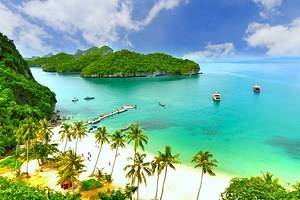
Exploring Thailand's Islands: The islands are some of Thailand's hottest attractions. Glorious beaches attract all kinds of travelers and vacationers. Places like Koh Phi Phi and Koh Samui attract a lot of attention but you may also want to consider destinations like Koh Phangan and Koh Tao, which offer unique alternatives.


